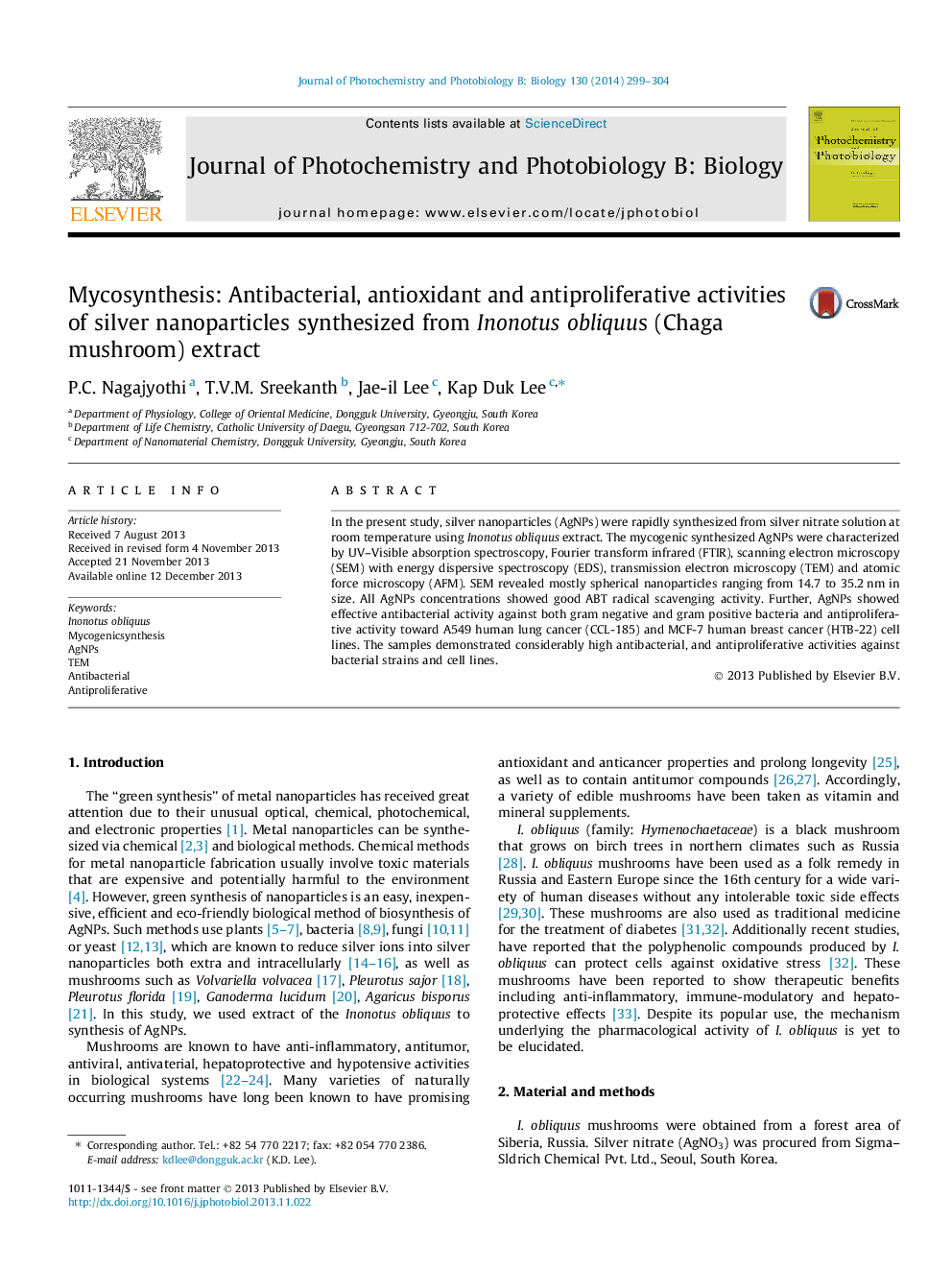| Article ID | Journal | Published Year | Pages | File Type |
|---|---|---|---|---|
| 30451 | Journal of Photochemistry and Photobiology B: Biology | 2014 | 6 Pages |
•A simple, stable and eco-friendly method of biosynthesizing AgNPs was successfully developed using Inonotus obliquus extract.•The TEM images have shown that the formed AgNPs were predominately spherical in nature, but that triangle, hexagonal, and uneven shaped nanoparticles were also formed.•AgNPs showed significant cytotoxicity against A549 human lung cancer (CCL-185) and MCF-7 human breast cancer (HTB-22) cell lines.
In the present study, silver nanoparticles (AgNPs) were rapidly synthesized from silver nitrate solution at room temperature using Inonotus obliquus extract. The mycogenic synthesized AgNPs were characterized by UV–Visible absorption spectroscopy, Fourier transform infrared (FTIR), scanning electron microscopy (SEM) with energy dispersive spectroscopy (EDS), transmission electron microscopy (TEM) and atomic force microscopy (AFM). SEM revealed mostly spherical nanoparticles ranging from 14.7 to 35.2 nm in size. All AgNPs concentrations showed good ABT radical scavenging activity. Further, AgNPs showed effective antibacterial activity against both gram negative and gram positive bacteria and antiproliferative activity toward A549 human lung cancer (CCL-185) and MCF-7 human breast cancer (HTB-22) cell lines. The samples demonstrated considerably high antibacterial, and antiproliferative activities against bacterial strains and cell lines.
Graphical abstractFigure optionsDownload full-size imageDownload as PowerPoint slide
